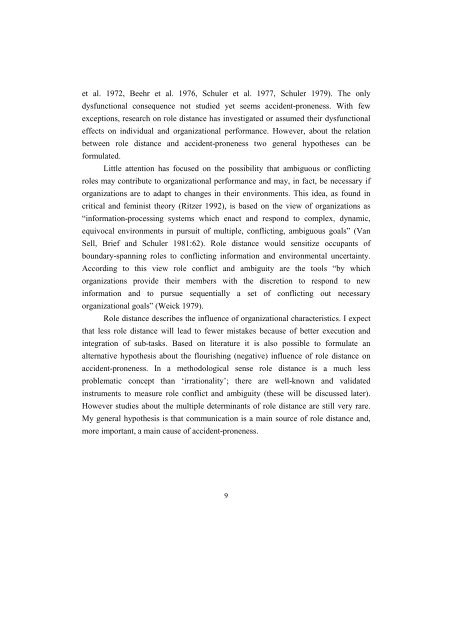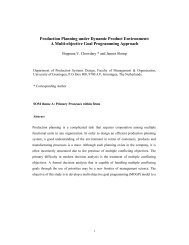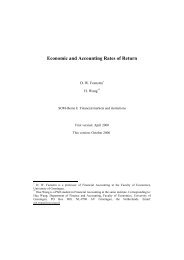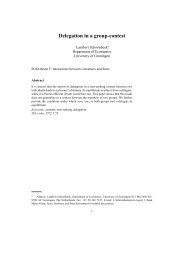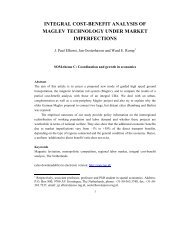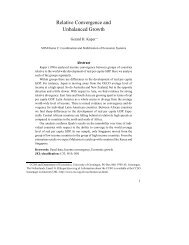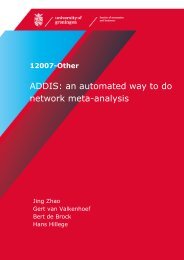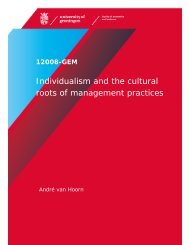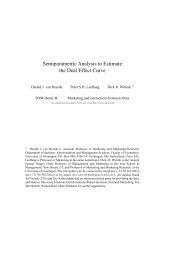Communication and Industrial Accidents - SOM Research Reports
Communication and Industrial Accidents - SOM Research Reports
Communication and Industrial Accidents - SOM Research Reports
Create successful ePaper yourself
Turn your PDF publications into a flip-book with our unique Google optimized e-Paper software.
et al. 1972, Beehr et al. 1976, Schuler et al. 1977, Schuler 1979). The only<br />
dysfunctional consequence not studied yet seems accident-proneness. With few<br />
exceptions, research on role distance has investigated or assumed their dysfunctional<br />
effects on individual <strong>and</strong> organizational performance. However, about the relation<br />
between role distance <strong>and</strong> accident-proneness two general hypotheses can be<br />
formulated.<br />
Little attention has focused on the possibility that ambiguous or conflicting<br />
roles may contribute to organizational performance <strong>and</strong> may, in fact, be necessary if<br />
organizations are to adapt to changes in their environments. This idea, as found in<br />
critical <strong>and</strong> feminist theory (Ritzer 1992), is based on the view of organizations as<br />
“information-processing systems which enact <strong>and</strong> respond to complex, dynamic,<br />
equivocal environments in pursuit of multiple, conflicting, ambiguous goals” (Van<br />
Sell, Brief <strong>and</strong> Schuler 1981:62). Role distance would sensitize occupants of<br />
boundary-spanning roles to conflicting information <strong>and</strong> environmental uncertainty.<br />
According to this view role conflict <strong>and</strong> ambiguity are the tools “by which<br />
organizations provide their members with the discretion to respond to new<br />
information <strong>and</strong> to pursue sequentially a set of conflicting out necessary<br />
organizational goals” (Weick 1979).<br />
Role distance describes the influence of organizational characteristics. I expect<br />
that less role distance will lead to fewer mistakes because of better execution <strong>and</strong><br />
integration of sub-tasks. Based on literature it is also possible to formulate an<br />
alternative hypothesis about the flourishing (negative) influence of role distance on<br />
accident-proneness. In a methodological sense role distance is a much less<br />
problematic concept than ‘irrationality’; there are well-known <strong>and</strong> validated<br />
instruments to measure role conflict <strong>and</strong> ambiguity (these will be discussed later).<br />
However studies about the multiple determinants of role distance are still very rare.<br />
My general hypothesis is that communication is a main source of role distance <strong>and</strong>,<br />
more important, a main cause of accident-proneness.<br />
9


